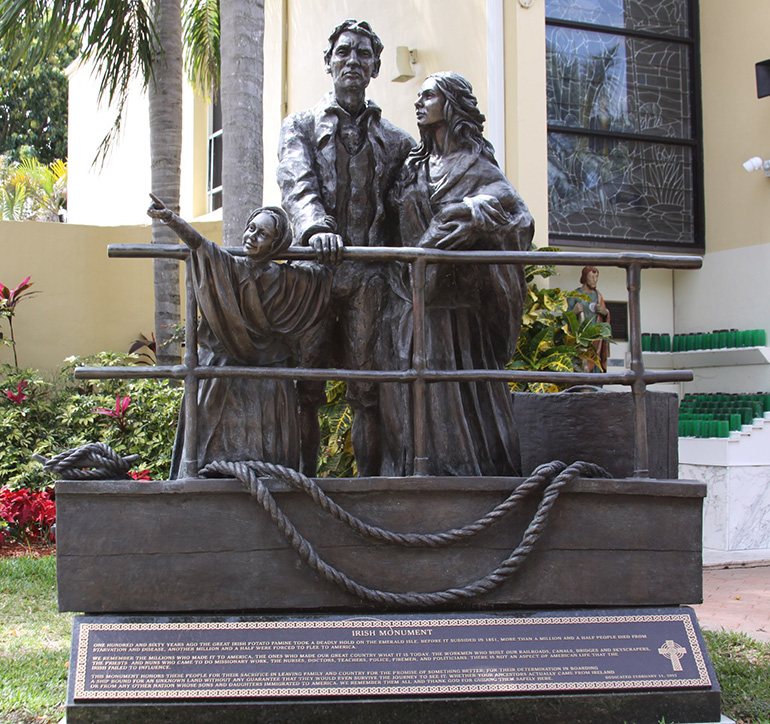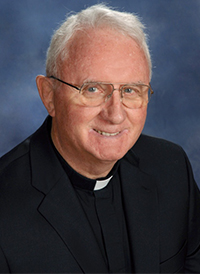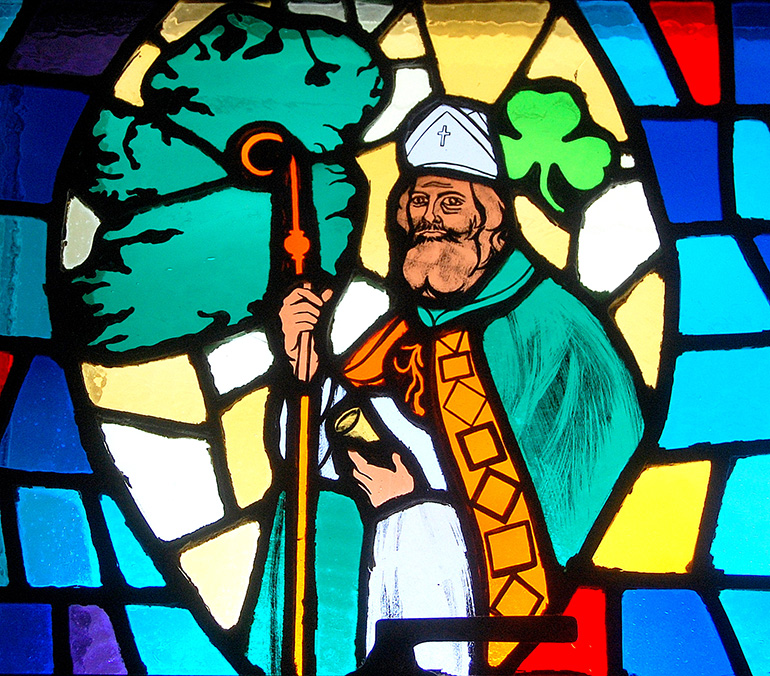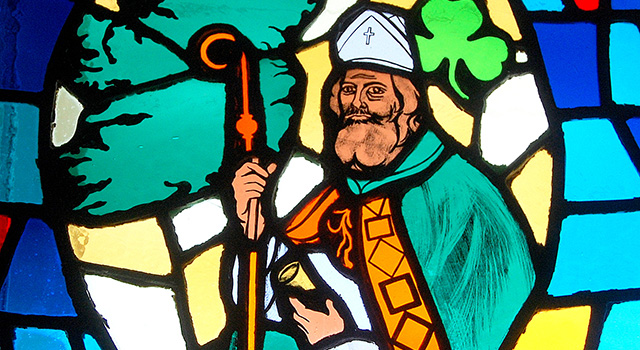By Msgr. Vincent Kelly - The Archdiocese of Miami

Photographer: JONATHAN MARTINEZ
This statue in honor of Irish immigrants to south Florida is erected on the grounds of Nativity Parish in Hollywood.
An ancient people who lived thousands of years ago occupied land in the Scandinavian countries — Scotland, Ireland and other neighboring territories. Survival was very difficult because of weather conditions, invaders, lack of a stable food supply and health issues. What these people acquired was the skill of survival. This translated into the development of a mental and physical stamina that allowed them to face any challenge. Medical researches of our day may contest this understanding, but in centuries past it was believed and testified to by the capacity of these people to survive the most difficult conditions. Resilience!

Photographer: FILE PHOTO
Irish-born Msgr. Vincent Kelly is pastor of st. John the Baptist Parish in Fort Lauderdale and supervising principal at both St. Thomas Aquinas and Cardinal Gibbons high schools in Fort Lauderdale.
The Celtic strain was passed on from generation to generation. These people endured the challenges of nature, enemy confrontation and the advancement of community living, which required serious adaptation. All who kept focus on what was important survived and continued their culture. All who became “fat” and indolent lost their appetite to achieve and transmit.
When Christianity came to these “wild” people in Ireland in the fifth century, it acquired some of this Celtic resilience. Hence the monastic institutions established by Irish monks throughout Europe were the epitome of adaptation to the needs of people. Thus the faith became part of the way of life.
On this St. Patrick’s Day, may we salute the resilience of the original immigrants to the United States, especially the Irish. They came in many cases as unwelcomed, they worked tirelessly, advanced in education and achieved acceptance. The Celtic tenacity gave them an edge over others who had an easier journey.
One of the great reflections of Irish immigrants was the Catholic faith they brought. This may have been their greatest strength, especially in times of opposition. That strong faith gave them confidence, energy and purpose. Success was seen not just in material achievement, but more so in securing eternal salvation. That Celtic spirit imbued a determination that no person could stall.
Today, the subtle, materialistic and indulgent aspect of American society tests the strength of the Celtic spirit, especially as it relates to our faith. Are we so weak that in our Garden of Eden we eat the apple of submission to the false and misleading ways of life? Are we betraying the Celtic spirit that really all of us have received regardless of our nationality?
In times of trial, the good, the committed and the resourceful will emerge with a faith sufficient to assure them of eternal happiness. Resilience is the “ace in the hole” to be renewed in spirit and redirected to the road of salvation.
This column is taken from Msgr. Kelly's “From the Pastor’s Desk” message to his parishioners, published March 17, 2013.

Photographer: JIM DAVIS | FC
St. Patrick, Ireland's great evangelizer, is featured in a stained-glass window at St. Gabriel Church, Pompano Beach.

